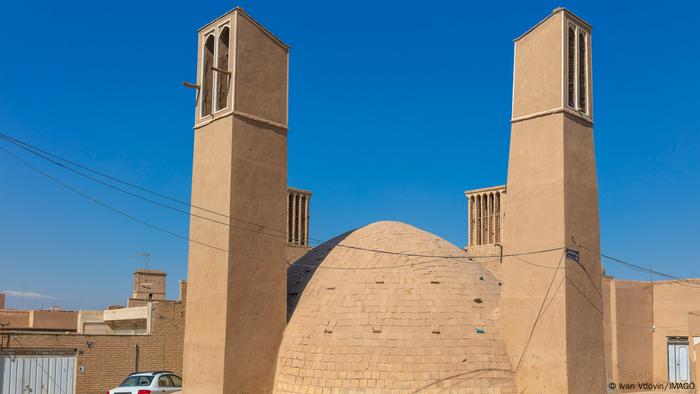
Accessible drinking water is the main condition for survival in a hot city. Thus, the German government intends to increase the number of drinking fountains throughout the country, and a bill is already prepared, according to which municipal authorities will be obliged to provide citizens with free drinking water sources. For example, 203 drinking fountains are already in operation in Berlin from April to October.
drinking fountain in berlin
“By acting today, cities will make an important contribution to protecting citizens’ health,” said German Minister for the Environment, Nature Conservation, Nuclear Safety and Consumer Protection Steffi Lemke. temperatures in Germany are no longer a rarity.”
The bill establishes that drinking fountains must be located where technically possible. The idea is welcomed by Julian Fischer of the environmental non-governmental group A Tip: Tap. “Tap water in Germany is of excellent quality. It’s a shame that people buy bottled water, which they then throw away, which only increases the amount of waste”, he laments. That’s why A Dica: A Tap is running the Refill program, which gives citizens free access to tap water at participating stores, cafes and pharmacies.
Urban architecture in new conditions
In the heat, it is especially difficult to be in the “concrete jungle”, therefore, in the world, landscaping is gaining popularity not only on the streets, but also on the facades of buildings. The largest green facade in Europe is located in Düsseldorf, Germany. It was designed by architect Christoph Ingenhoven to cool the building on summer days. Landscape designer Martin Belz helped the 27-meter plant wall survive its first hot summer. “Leaves retain moisture and evaporate it with heat. This protection is better than any umbrella!”, – he says.

Windcatcher Towers in Iran
The attention of urban planners is also attracted by “wind catchers”. These are towers, known since the heyday of Persian architecture, with open windows up to five meters high, which are placed on the roofs of buildings to “catch” fresh air and direct it into the building, while releasing external heat. . The principle can be used in the construction of modern buildings.
Passive cooling of homes through natural air circulation and heat dissipation eliminates the need for air conditioners and requires virtually no energy costs. In addition, this approach will help to prevent the development of dependence on air conditioners and the formation of “heat islands” within the city – when the temperature difference between the city and the neighboring countryside can reach 10-15 degrees.
Help for city dwellers
In Berlin, with funding from the city authorities, the project “Hitzehilfe” (“Help in the heat”) was launched – it is about helping the homeless in the capital. The pilot project in the Schöneberg district offers a place for those who need to sleep and relax during the day, with the opportunity to take a refreshing shower, refreshment and laundry.
Geoengineering is a planetary scale task
Dramatic climate changes are forcing scientists around the world to come up with the most innovative solutions. For example, to resist solar activity on a planetary scale. Utopia? No way!
Volcanic eruptions and the consequent release of ash, gas and dust into the upper layers of the atmosphere are known to reflect sunlight and significantly reduce the temperature. This effect was studied in 1991 after the eruption of Mount Pinatubo in the Philippines. Harvard scientists propose to increase the Earth’s reflectivity by scattering reflective aerosols in the stratosphere. Such a measure could help reduce the sunlight absorbed by our planet. However, this method can also have negative consequences: for example, the destruction of the ozone layer.
Researchers at the University of California at San Diego propose using the surface of the world’s oceans to reflect solar heat creating “white foam” (or “microbubbles”). This foam, scientists believe, will help reflect ten times more sunlight off the sea surface, and the global temperature drop could reach 0.5 degrees Celsius. But the consequences of using this foam for the ocean ecosystem are still poorly understood.
Source: DW
Lori Barajas is an accomplished journalist, known for her insightful and thought-provoking writing on economy. She currently works as a writer at 247 news reel. With a passion for understanding the economy, Lori’s writing delves deep into the financial issues that matter most, providing readers with a unique perspective on current events.